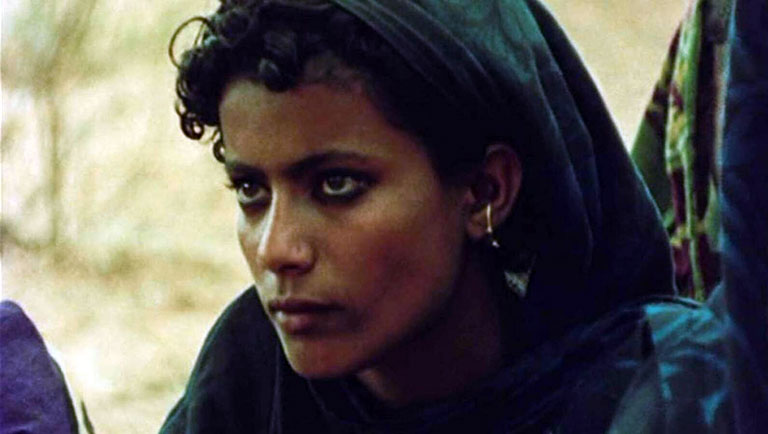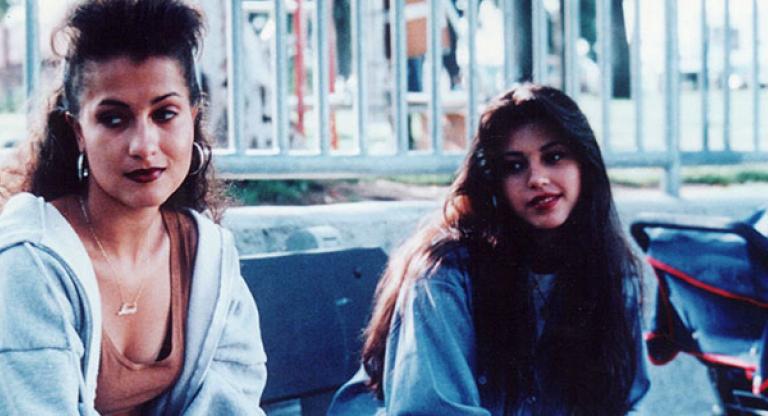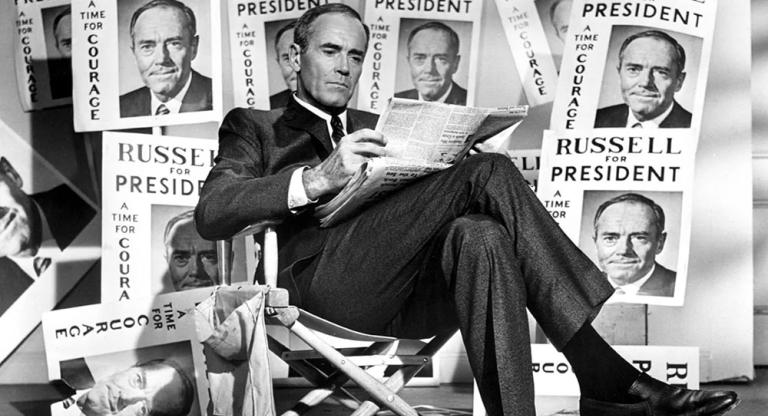Film Forum’s series The Hour of Liberation: Decolonizing Cinema, 1966-1981 runs through June 13 and features an expansive selection of fictional, narrative, and hybrid films capturing so-called “Third World” liberation movements in process.
As the series namesake, The Hour of Liberation Has Arrived is one of its most vital inclusions. Lebanese filmmaker Heiny Srour’s documentary about Dhofar’s uprising against the British-backed Sultanate of Oman is unique not only in its fearless closeness to conflict, but also its explicitly feminist approach to the many women fighters. It was also the first film by an Arab woman shown at Cannes.
The Monday, June 3 screening marks the U.S. premiere of a new restoration with subtitles created specifically for the one-time showing. To mark the occasion, filmmaker Mary Jirmanus Saba conducted an email interview with Srour. They discuss Srour’s background in Social Anthropology, the mixed treatment of feminism by the Arab Left, and the challenges of carrying sync sound equipment over hundreds of kilometers under the bombing of the Royal Air Force.
The Hour of Liberation Has Arrived was your first film, and you made it while studying anthropology in a PhD program where Jean Rouch taught. How did this training influence your work?
My PhD supervisor was actually not Rouch but Maxime Rodinson, one of the greatest Orientalists and Social Anthropologists. Rodinson was very thorough and demanding in terms of scholarly integrity. I learned a lot from him, and my film does have an anthropological angle. Jean Rouch’s cinema didn’t influence me as such, but I learned from him how essential it is to preserve the pages of history of underdeveloped societies. The end result is that my film is the only document shot deep inside the previous Liberated Area of Dhofar/Sultanate of Oman.
Can you share your cinematic influences from that time? What were the aspirations for the film — were they ethnographic, artistic, political?
My aspirations for the film were artistic and feminist. In terms of style, my favorite filmmaker was Fellini. And when I saw 8 ½, I realized that cinema was a very powerful medium that could express everything I wanted to say. But my main motivation in overcoming so many hurdles was feminist. I was a defeated feminist in Lebanon. The Lebanese Left was not interested in feminist issues and kept closing the subject under various pretexts, one being that the women will be free when the main enemy, Imperialism, is defeated. But the Algerian Revolution was irrefutable proof of the bad faith of this supposed Left: Algerian women during the Liberation War moved mountains only to end up with the Islamic Sharia after independence. I couldn’t believe my ears when the representative of the Popular Front for the Liberation of the Occupied Arabian Gulf opened the subject of women from his own initiative and proudly said that the Front was fighting against women’s oppression — because women were not just oppressed by imperialism and class society, but also by their father, husband, brothers. I dropped my other film projects and put all my energy into making this film.
You’ve spoken in past interviews — and even in the film subtitles — about how the on-set division of labor impacted what and how we see of the Front. Specifically, you’ve talked about how your cameraman filmed the women fighters: largely from afar, and barely distinguishable from the men.
My French cameraman Michel Humeau and the soundman Jean-Louis Ughetto are heroes: the first carried a ten kilogram sync camera, and the second a twelve kilogram Nagra walking 800 kilometers through deserts and high mountains under the bombing of the Royal Air Force. It’s thanks to Michel that I was able to give a voice to the voiceless, for the first time in the Middle East, due to the use of sync camera. It was impossible to find electricity to charge the sync camera in a primitive area, so Michel innovated by using a solar battery, a technology used only by the NASA at the time. However, both had a very male dominated outlook and were, in those days, blind and often unsympathetic to the avant-garde feminism of the Front. Forty years later, when France was the victim of terrorist attacks, Michel probably realized that women were the main rampart against fundamentalism. When he saw the film again, he told me that the most interesting sequence was the women’s liberation one! Here you are. But it was too late for me to give the slap I dreamed to give to the incompetence of the Arab Left.
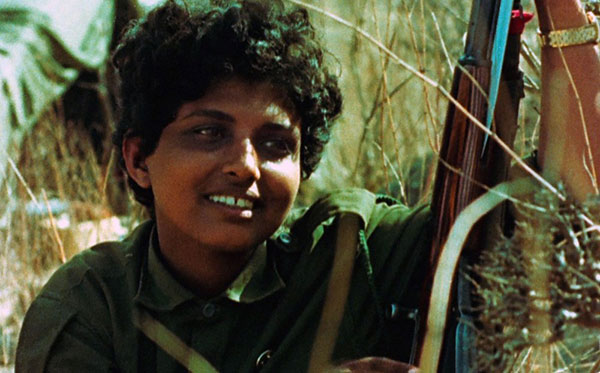
How would you have liked to film?
I would have liked a lot of close-ups and medium shots to show the femininity on the women fighters. It was crucial to show that half of the future cadres of the Revolution were women in the training camp. Because of lice, and lack of water, women cut their hair very short. Lacking bras, mostly very slim, these pubescent girls looked like men if shot from far. So my instruction were crucial to reveal their femininity and to prove that the Front practiced positive discrimination in favor of women. Such a radical feminism was totally unheard of in these days. I kept requesting my medium shots and close ups to no avail. When I saw the rushes, I was enraged and felt betrayed.
What kinds of scenes might have been possible, had you been behind the camera yourself?
Beside revealing the femininity of the freedom fighters and the extraordinary feminism of the Front, a very important missing sequence is the children’s school. It’s a theater play that I saw before the crew arrived. To commemorate the children’s school anniversary, the director of the school, Layla Fakhro, a marvellous Bahraini feminist, found a very creative and clever way to convince the male children of the line of the Front: “No women’s liberation without society liberation, and no society liberation without women’s liberation.”
The pupils of the children’s school were mostly male, unlike the training camp where equality could be practiced, because as we see in the film, teenage girls could run away from parents and tribe and join the Front. But little girls couldn’t. Children had to walk some 400km under RAF bomb to reach the school, as we see in the film. The parents didn’t allow their daughters to go that far. Furthermore, parents didn’t believe in educating little girls and anyway they needed them to take care of the livestock and to get money by marrying them.
So Layla Fakhro asked the children to make a play describing the predicament of a little girl married by force by her father to an old man against the will of her powerless mother. In the play, the little girl ends up running away and finding refuge in the school of the Front. It was sending a strong message to children: you must convince your parents to send your sisters to the school. I asked the crew to stay longer to shoot the restaging of this sequence. But they were exhausted and had already worked an extra month and lost a lot of weight. They refused to leave the material with me and to teach the Yemeni cameraman how the use of the synch camera. All in all, it’s a terrible heartache to me that the Front of the film looks less feminist than the Front of the reality.
The relationship between form and content was central to the Third Cinema Movement, with which you’ve identified. This particular question has been rarely discussed in relation to Arab cinema, but the aspirations to make formal gestures that would expand political content are apparent in your own work and in the work of other Arab filmmakers like Christian Ghazi, Mustafa Abu Ali, Joceleyn Saab. How did you think about the role of formal experimentation in your work?
To me form is as important, if not more, than content. I was surprised to discover that Syrian TV sometimes made very feminist series. But the melodramatic form, the poor staging, and the appalling actors performances produces the opposite effect: instead of being sympathetic to women’s tragedies, you just feel like laughing! I haven’t seen all the films of my colleagues, so I cannot answer this question in all fairness. From what I was able to see, I feel that Christian Ghazi was the most successful one in creating a new form.
The Hour of Liberation was innovative at the time on various levels: in terms of content, it was the first time that an Arab filmmaker was leaving the comfort of studios to shoot under military danger in one of the most backward areas of the planet. On a world level, I never heard of a team walking 800 km to shoot a film. Filming one of the most archaic societies while displaying its longing for freedom and dignity was also very unique in these days. I had attended the anthropological Festival Dei Popoli in Florence/Italy, and I witnessed how the best Western anthropologist/filmmakers were paternalistic with the so called primitive societies. They often observed them like insects. My film proved that the so-called underdeveloped people were more mature in terms of feminism and democracy than the citizens of industrial nations. The same goes for the role of the army in any given society: my film proves that it is actually possible to have an army who defends the nation and is at the service of the people, with a tiny military budget. If you compare what’s happening nowadays to children, women and armies, with content of my film, you’ll realize that The Hour of Liberation is very modern and topical. In terms of style, giving voice to the voiceless through sync sound instead of the commentary and music used in these days as a soundtrack was also very innovative. Self effacement of the director behind the voice of the people and using their songs instead of the commentary was also very original in that time. Same goes, in Arab Cinema, for the use of captions. However, captions to draw a political lesson was not my invention, but the influence of Tricontinental Cinema, Cuban Cinema, Fernando Solanos in Argentina, Joris Ivens in Europe. A lot of my innovations in this film were copied later. So ultimately my most experimental work remains today my feature film Leila and the Wolves which was, in part copied, but remains difficult to copy in other ways.
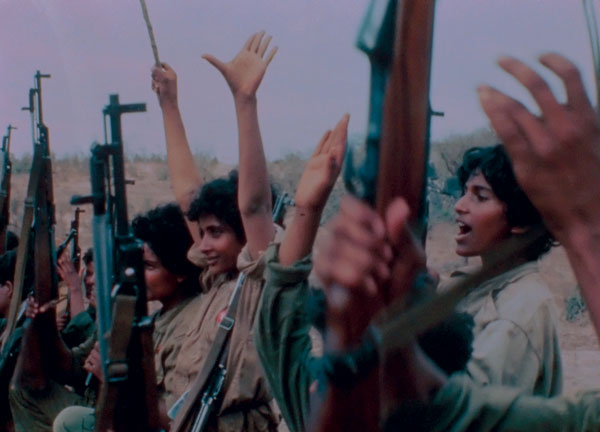
You’ve talked about Agnès Varda’s Cleo from 5 to 7 and Fernando Solanos and Octavio Getino’s The Hour of the Furnaces as being important to your artistic development. I am curious if you have also seen works by politically-committed women Third World directors like Sara Gomez or Sara Maldoror?
I was not influenced by Agnès Varda, but she proved to me that a woman can be a filmmaker, too. Fernando Solanas proved to me that you can be a brilliant and innovative filmmaker even if you come from the Third World. Alas, I didn’t see any of the work of Sarah Maldoror or Sara Gomez.
In 1974, when the film was released, rural and working class women were actively involved involved in trade union and student struggles back in Lebanon, not to mention the Palestinian national struggle. Were you able to show the film in any of these contexts, and if so what was the audience’s reaction?
Unfortunately the film was banned all over the Arab World, and Lebanon, too. It screened very few times in the Arab World, but when it was, the reception was enthusiastic and the film became a legend. This is in sharp contrast in Argentina, the banned The Hour of the Furnaces was seen by nearly a million people in hiding underground situations often dangerous: Argentinian workers deprived themselves for a month from cigarettes to save and pay a fee, in order to secretly see this film under police threat to be discovered and arrested. Typical of the incompetence of most of the Arab Left, nothing like that happened in the Arab World.
While women were central to anti-colonial and trade union struggles across the Middle East, from Algeria to Palestine, but frequently sidelined, why in Dhofar did women’s liberation become official party policy ?
The radical line of the People’s Liberation Front of the Occupied Arabian Gulf can explain that. This radicalism is part of a holistic progressive outlook to the world. An outlook expressed in the way children were educated into democracy and self reliance. An outlook expressed in the way the People’s Army functioned: no grades, no salaries, at the service of the people. An outlook expressed in the leadership of the Front: anonymous and collective without stars. This radical outlook is the very opposite of the Algerian and Palestinian Revolutions.
How did the feminism of the front impact or change your own feminism?
I used to think, during my PhD research at the Sorbonne into the status of Lebanese and Arab women, that women’s liberation is mostly dependant on industrialisation and western influence. I discovered in Dhofar that women’s liberation solely depends on how radical a movement or a society chooses to be.
Since you’ve continued making films, have you seen a change in the possibilities for what kinds of films women can make, and how they are distributed and received?
Women are now making films all over the world. Not always feminist films, unfortunately. But then, it’s a matter of being subservient to patriarchy and dominant ideology in general. The distribution of women films depends on that, too. Women have made some significant progress in opposing patriarchy and the system in general. Sometimes men make films more feminist than women! There is still a lot of work to be done by women filmmakers on the long road of liberation.
